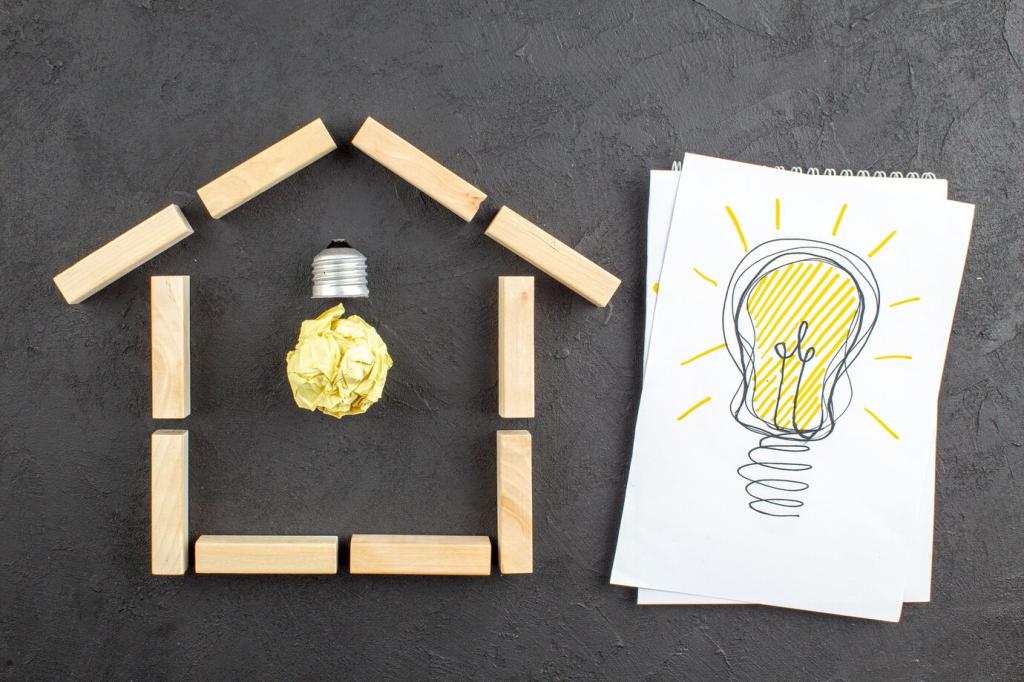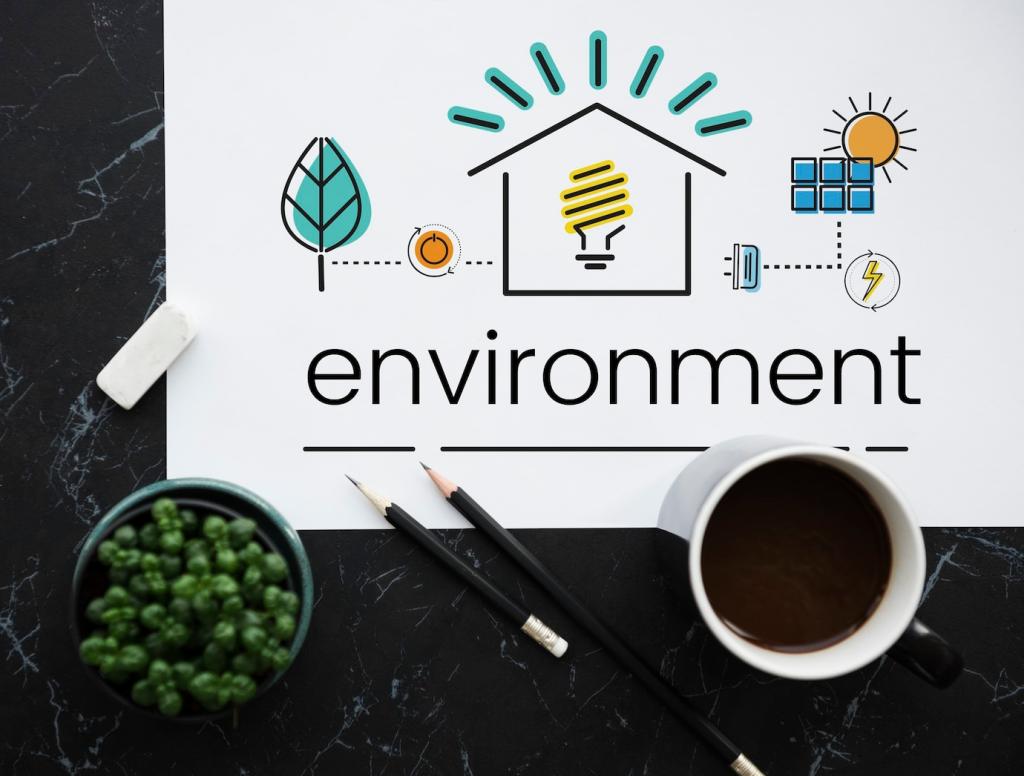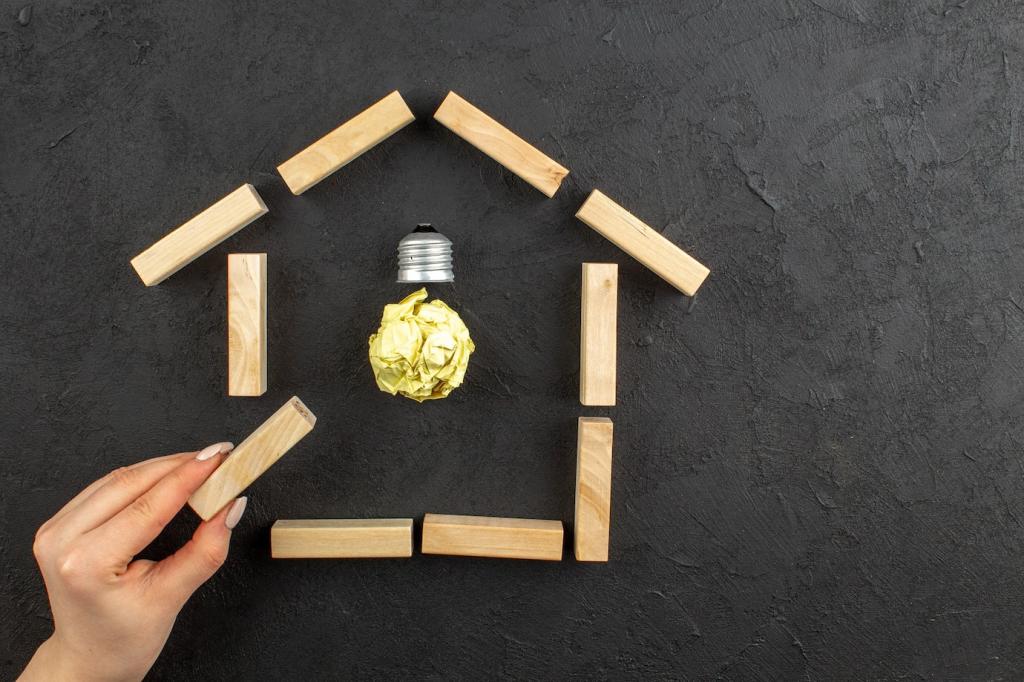
Energy-Efficient Lighting for Tiny Eco-Homes
Chosen theme: Energy-Efficient Lighting for Tiny Eco-Homes. Step into bright, low-impact living with ideas that make every square foot glow smarter, kinder, and more sustainably—without sacrificing comfort, style, or your off-grid goals.
Lighting Basics for Small Footprints
In tiny eco-homes, efficiency starts with lumens, not watts. Aim for about 100–150 lux for general areas and 300 lux at task zones. Choose LEDs delivering 90–150 lumens per watt, and favor optical designs that spread light evenly to avoid dark corners.
Lighting Basics for Small Footprints
Warm white around 2700–3000K soothes evenings, while 3500–4000K keeps workspaces crisp without feeling sterile. Zones matter: a cozy loft benefits from warm light, while a compact kitchen thrives under neutral tones that reveal true colors and boost alertness.

12V DC Circuits for Lean Efficiency
Running LED strips and puck lights on 12V DC avoids inverter losses and simplifies wiring. Choose constant-voltage LEDs and dedicated drivers. Label circuits clearly, use appropriate fusing, and keep wire runs short to reduce voltage drop across compact layouts.

Battery-Savvy Light Planning
Map daily lighting hours to your battery capacity. Prioritize high-use zones with efficient fixtures and dimming. In shoulder seasons, shift routines toward daylight and rely on task pools at night. A small, well-planned system beats oversized batteries every time.

Motion and Vacancy Sensors
Use occupancy sensors in bathroom and entry zones, vacancy sensors in the kitchen for manual-on control. Short timeouts avoid waste while preventing annoying blackouts. For lofts, low-output night mode keeps steps visible without jolting you awake.

Daylight Harvesting and Dimming
Pair window-facing fixtures with daylight sensors that auto-dim when the sun does the heavy lifting. Layer manual dimmers to fine-tune scenes—from focused cooking to movie-night glow—saving energy while keeping the ambiance exactly how you prefer it.

Voice, Scenes, and Routines
Create morning, work, and evening scenes that set brightness and color temperature in one command. Keep a physical backup switch for guests. Over time, data-informed routines can reduce runtime substantially while preserving comfort in your tiny eco-home.
Layered Lighting for Micro Spaces
Ambient Light that Never Glares
Indirect LED strips tucked along ceiling coves or shelf lips wash surfaces with gentle light. This approach eliminates harsh hotspots and helps your ceiling visually lift, making the space feel taller and more breathable without adding watts.
Task Pools Where Work Happens
Under-cabinet bars in the galley, a directional sconce by the fold-down desk, and focused reading light in the loft deliver precision without lighting the entire home. Task pools let you run lower overall brightness and still see perfectly.
Accents that Tell Your Story
Niche lights on plants, art, or reclaimed wood details celebrate materials and craftsmanship. A tiny home gains personality from accents, not clutter. Keep accent circuits dimmable, and invite friends to vote on their favorite look in the comments.
Choosing Fixtures that Work Hard
Slim wall sconces free up ceiling space and minimize head bumps in lofts. Look for fully enclosed optics, high efficacy, and warm-dim options. Mount on blocking, not just sheathing, to handle movement and keep beams steady during travel.
Mini track or magnetic rail systems adapt as your layout evolves. Slide heads to highlight a new art piece or a seasonal herb garden. One efficient driver can power multiple heads, reducing clutter while maximizing flexibility in your tiny eco-home.
Choose damp-rated LEDs with sealed lenses and low flicker for shower-adjacent areas. Pair with a humidity sensor to reduce fog and mold risk. A tiny bathroom shines brighter, smells fresher, and uses less energy when lighting and ventilation work together.

Stories, Savings, and Your Next Step
Maya’s 160-Square-Foot Glow-Up
Maya swapped two old bulbs for high-CRI LED strips, a focused reading lamp, and a hallway sensor. Her evenings feel calmer, and battery draw dropped noticeably. She credits layered light with making her cedar walls look richer and more natural.

